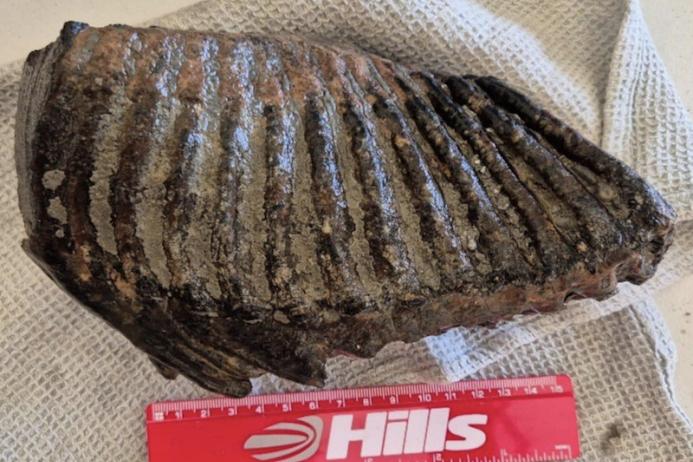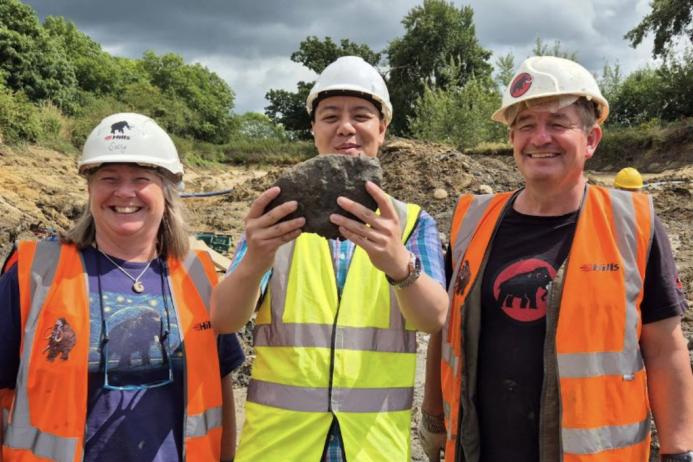Swindon’s mammoth graveyard yields more palaeontological wonders
Third dig at Hills Quarry Products’ Cerney Wick site yields further artefacts and mammoth remains
HILLS Quarry Products’ site at Cerney Wick, north of Swindon, which inspired the BBC1 documentary ‘Attenborough and the Mammoth Graveyard’, is once again yielding palaeontological wonders.
The latest dig, led by passionate amateur palaeontologists Sally and Dr Neville Hollingworth, began on Monday 15 July and the list of amazing discoveries over the first few days has included: a Neanderthal hand axe; a mammoth tooth, rib, pelvic bone and skull fragments; plus a nautilus and a shark tooth.
More than 100 student volunteers from 18 universities and experts from the wider palaeontological world will be assisting with the dig until it closes on 5 August 2024.
Project lead Sally Hollingworth commented: ‘We are so excited to be back on the site which has previously yielded remains of at least five Ice Age mammoths and a number of stone tools made by Neanderthals. From day one of this dig, we’ve already made some amazing discoveries. Who knows what we might find during the rest of the dig!
‘We’ve been overwhelmed with the enthusiasm and hard work the small army of unpaid volunteers has shown, plus the exceptional support from Hills Quarry Products, who have facilitated and supported this and the two previous digs.’

The artefacts and mammoth remains found at the quarry date to around 210,000–220,000 years ago, towards the end of a warmer interglacial period when Britain was still occupied by Neanderthals. Towards the end of this period, early humans abandoned Britain as temperatures plummeted and the landmass was plunged back under ice.
It is not yet clear whether the mammoths were killed by Neanderthals, or why so many were found in one place, but archaeological sites from this period are incredibly rare, as is evidence of how Neanderthals interacted with mammoths, making this discovery one that has enormous value for understanding Neanderthal behaviour, not just in Britain but across Europe.










